QUICK IMPLANT SIZE IDENTIFICATION
| REGULAR PALTFORM ( REDICE ACTIVE ) | |||||
| Length/Diameter | Ø 3.3 | Ø 3.75 | Ø 4.20 | Ø 5.0 | Ø 6.0 |
| 6.0mm L | RA37506 | RA4206 | RA5006 | RA6006 | |
| 8.0mm L | RA3308 | RA37508 | RA4208 | RA5008 | RA6008 |
| 10.0mm L | RA3310 | RA37510 | RA4210 | RA5010 | RA6010 |
| 11.5mm L | RA33115 | RA375115 | RA42115 | RA50115 | RA60115 |
| 13.0mm L | RA3313 | RA37513 | RA4213 | RA5013 | RA6013 |
| 16.0mm L | RA3316 | RA37516 | RA4216 | RA5016 | RA6016 |
Hex 2.42

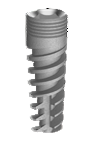
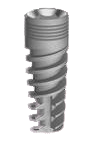
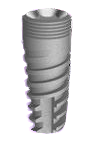

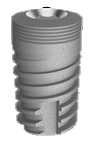
SINGLE PROSTHETICAL PLATFORM
The RDI Internal hex diameters utilize one line of prosthetic components.

DRILLING PROTOCOL
3.3

- Drill sequence by bone type – An additional 1 mm must
be added to the length of the drill to account for the angled
cutting tip. - D-I, D-II Dense bone considerations – Countersink
should be used if the standard dense bone protocol is not
sufficient to fully seat the implant without exceeding the
recommended maximum insertion torque of max. 60Ncm
for implant Ø3.75mm and above. Do not exceed max.
45Ncm for implants diameter lower than 3.75mm.
DRILLING PROTOCOL
3.75
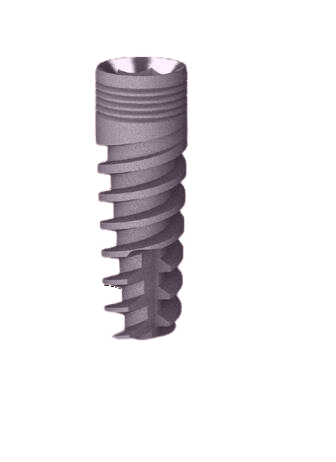
- Drill sequence by bone type – An additional 1 mm must
be added to the length of the drill to account for the angled
cutting tip. - D-I, D-II Dense bone considerations – Countersink
should be used if the standard dense bone protocol is not
sufficient to fully seat the implant without exceeding the
recommended maximum insertion torque of max. 60Ncm
for implant Ø3.75mm and above. Do not exceed max.
45Ncm for implants diameter lower than 3.75mm.
DRILLING PROTOCOL
4.2
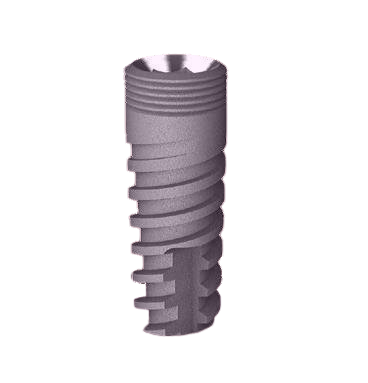
- Drill sequence by bone type – An additional 1 mm must
be added to the length of the drill to account for the angled
cutting tip. - D-I, D-II Dense bone considerations – Countersink
should be used if the standard dense bone protocol is not
sufficient to fully seat the implant without exceeding the
recommended maximum insertion torque of max. 60Ncm
for implant Ø3.75mm and above. Do not exceed max.
45Ncm for implants diameter lower than 3.75mm.
DRILLING PROTOCOL
5.0
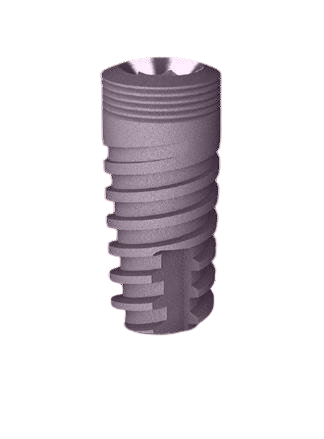
- Drill sequence by bone type – An additional 1 mm must
be added to the length of the drill to account for the angled
cutting tip. - D-I, D-II Dense bone considerations – Countersink
should be used if the standard dense bone protocol is not
sufficient to fully seat the implant without exceeding the
recommended maximum insertion torque of max. 60Ncm
for implant Ø3.75mm and above. Do not exceed max.
45Ncm for implants diameter lower than 3.75mm.
DRILLING PROTOCOL
6.0
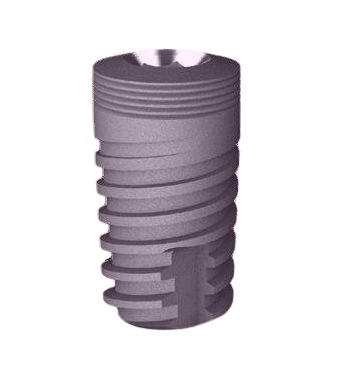
- Drill sequence by bone type – An additional 1 mm must
be added to the length of the drill to account for the angled
cutting tip. - D-I, D-II Dense bone considerations – Countersink
should be used if the standard dense bone protocol is not
sufficient to fully seat the implant without exceeding the
recommended maximum insertion torque of max. 60Ncm
for implant Ø3.75mm and above. Do not exceed max.
45Ncm for implants diameter lower than 3.75mm.


